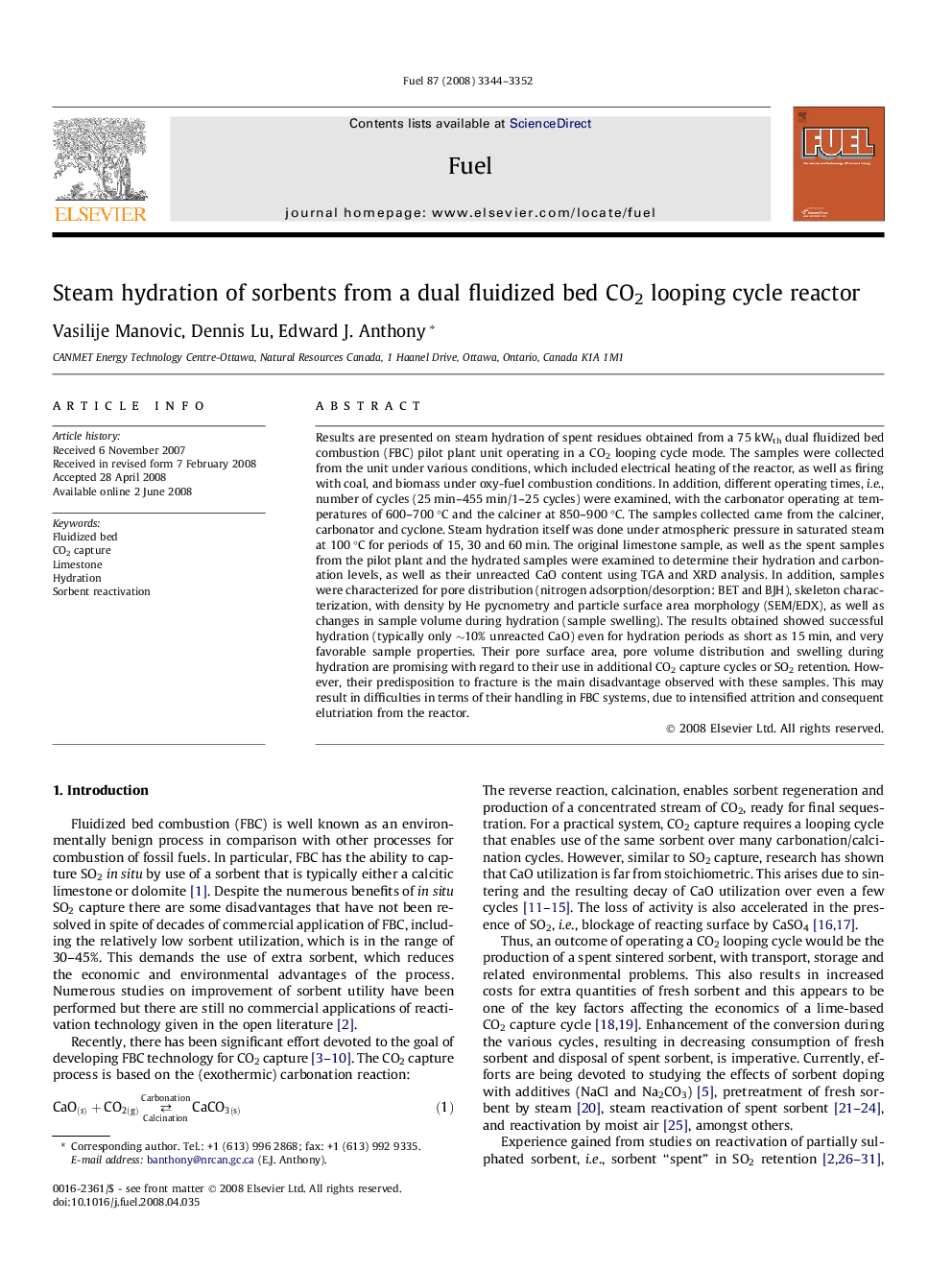| کد مقاله | کد نشریه | سال انتشار | مقاله انگلیسی | نسخه تمام متن |
|---|---|---|---|---|
| 208243 | 461243 | 2008 | 9 صفحه PDF | دانلود رایگان |

Results are presented on steam hydration of spent residues obtained from a 75 kWth dual fluidized bed combustion (FBC) pilot plant unit operating in a CO2 looping cycle mode. The samples were collected from the unit under various conditions, which included electrical heating of the reactor, as well as firing with coal, and biomass under oxy-fuel combustion conditions. In addition, different operating times, i.e., number of cycles (25 min–455 min/1–25 cycles) were examined, with the carbonator operating at temperatures of 600–700 °C and the calciner at 850–900 °C. The samples collected came from the calciner, carbonator and cyclone. Steam hydration itself was done under atmospheric pressure in saturated steam at 100 °C for periods of 15, 30 and 60 min. The original limestone sample, as well as the spent samples from the pilot plant and the hydrated samples were examined to determine their hydration and carbonation levels, as well as their unreacted CaO content using TGA and XRD analysis. In addition, samples were characterized for pore distribution (nitrogen adsorption/desorption: BET and BJH), skeleton characterization, with density by He pycnometry and particle surface area morphology (SEM/EDX), as well as changes in sample volume during hydration (sample swelling). The results obtained showed successful hydration (typically only ∼10% unreacted CaO) even for hydration periods as short as 15 min, and very favorable sample properties. Their pore surface area, pore volume distribution and swelling during hydration are promising with regard to their use in additional CO2 capture cycles or SO2 retention. However, their predisposition to fracture is the main disadvantage observed with these samples. This may result in difficulties in terms of their handling in FBC systems, due to intensified attrition and consequent elutriation from the reactor.
Journal: Fuel - Volume 87, Issues 15–16, November 2008, Pages 3344–3352